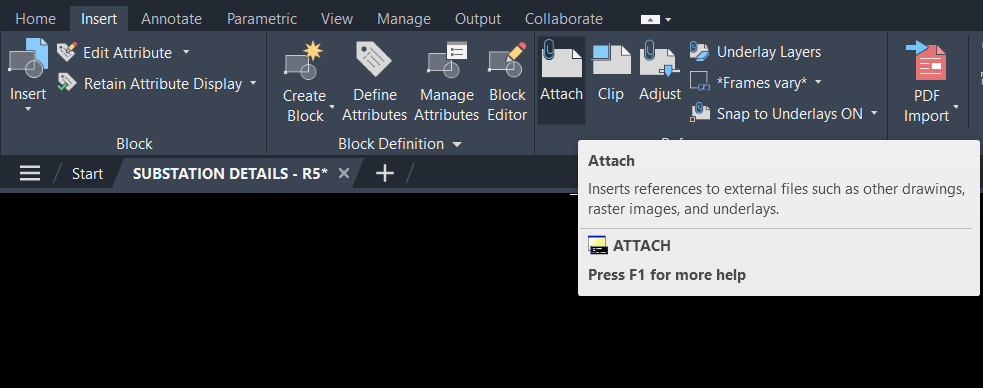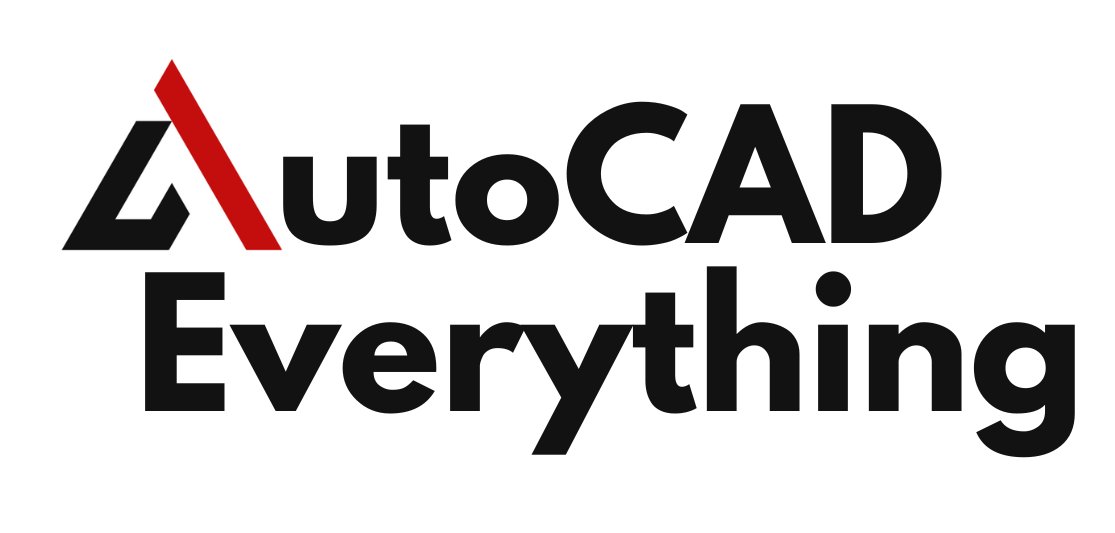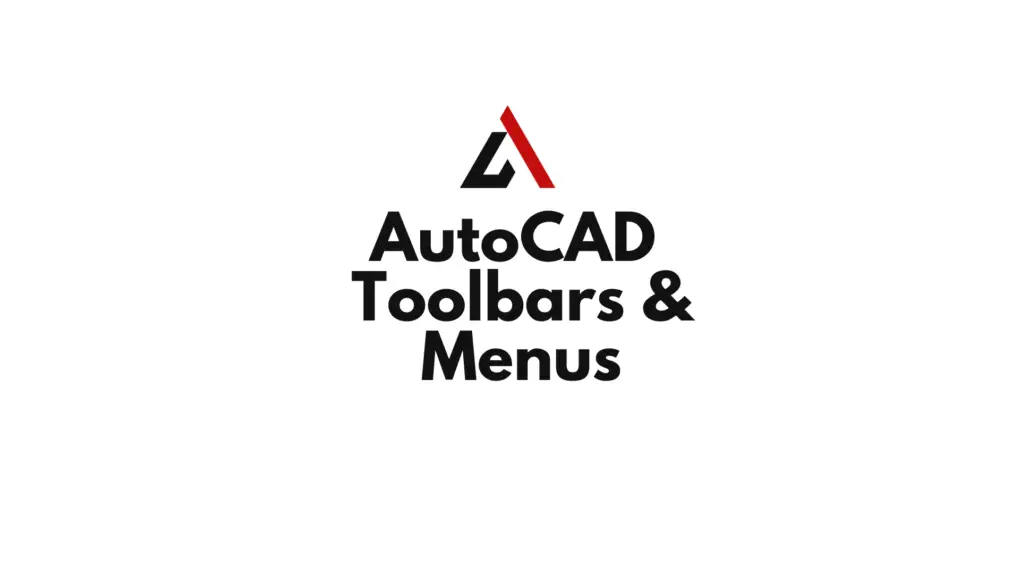Introduction
AutoCAD, the industry-standard software for design and drafting, is packed with powerful features that help professionals create precise and detailed drawings. At the core of its user interface are the toolbars and menus, which provide quick access to the myriad of tools and commands AutoCAD offers. Understanding how to use and customize these toolbars and menus is essential for optimizing your workflow and enhancing productivity. This article provides a comprehensive overview of the key AutoCAD toolbars and menus and guides you on how to customize them to better fit your unique design process.
Table of Contents
Understanding AutoCAD’s Interface
AutoCAD’s interface is designed to be intuitive yet highly customizable. The main components include the Ribbon, toolbars, the Command Line, and the Application Menu. Each of these elements plays a crucial role in how you interact with the software, enabling you to access commands, tools, and settings quickly and efficiently.
The Ribbon
What is the Ribbon?
The Ribbon is a central feature of the AutoCAD interface, introduced to simplify access to commands and tools. It is located at the top of the AutoCAD window and is organized into tabs (such as “Home,” “Insert,” “Annotate,” and “View”), each containing panels that group related commands.
Advantages of Using the Ribbon
The Ribbon consolidates a vast number of tools into an easily navigable format, reducing the need to remember complex command names or search through nested menus. It’s particularly useful for beginners, as it visually organizes commands, making it easier to find what you need.
Customizing the Ribbon
The Ribbon can be customized to better fit your workflow. You can add, remove, or rearrange tabs and panels to prioritize the tools you use most frequently. To customize the Ribbon, right-click on it and select “Customize the Ribbon.” This opens the Customize User Interface (CUI) editor, where you can modify existing tabs, create new ones, and change the layout to suit your preferences.
Also Read – Best Mouse for CAD
Toolbars in AutoCAD
What are Toolbars?
Toolbars in AutoCAD are collections of buttons that provide quick access to commands. Unlike the Ribbon, toolbars can float anywhere in the AutoCAD workspace or be docked along the edges of the window. Toolbars are particularly useful for experienced users who prefer a more compact and direct way of accessing commands.
Common Toolbars in AutoCAD
Some of the most commonly used toolbars in AutoCAD include:
- Draw Toolbar: Contains basic drawing tools like Line, Circle, Rectangle, and Arc.
- Modify Toolbar: Includes editing tools such as Move, Copy, Rotate, and Scale.
- Layers Toolbar: Provides quick access to layer management tools, including creating, locking, and hiding layers.
- Properties Toolbar: Allows users to quickly change object properties such as color, line type, and layer.

Customizing Toolbars
Toolbars can be customized to include only the commands you need. To customize a toolbar, you can right-click on it and select “Customize,” or use the CUI editor. In the CUI editor, you can drag and drop commands to add them to toolbars or remove commands you don’t use. You can also create entirely new toolbars tailored to your specific tasks, enhancing your efficiency by keeping essential tools at your fingertips.
The Command Line
What is the Command Line?
The Command Line is a crucial feature in AutoCAD, allowing users to input commands directly. Located at the bottom of the AutoCAD window, the Command Line displays prompts, options, and messages, making it an essential tool for those who prefer typing commands instead of clicking through menus.
Benefits of Using the Command Line
The Command Line is favored by many experienced AutoCAD users for its speed and precision. Commands can be entered quickly, and AutoCAD often suggests command completions, reducing the need to type the full command name. The Command Line also allows for the input of numerical values and coordinates, which is essential for creating precise drawings.
Customizing the Command Line
While the Command Line itself isn’t customizable in the same way as toolbars, you can adjust its appearance and functionality. You can change the font size, color, and transparency to better suit your workspace. Additionally, you can dock the Command Line at the top or bottom of the screen or leave it floating for easier access.
The Application Menu and Quick Access Toolbar
What is the Application Menu?
The Application Menu, accessed by clicking the AutoCAD logo in the top-left corner of the screen, provides access to file-related commands such as New, Open, Save, and Print. It also includes options for managing drawing settings and preferences.
What is the Quick Access Toolbar?
The Quick Access Toolbar is located above the Ribbon and provides one-click access to commonly used commands, such as Save, Undo, Redo, and Print. This toolbar is always visible, making it convenient for quickly accessing essential commands without navigating through the Ribbon.
Customizing the Quick Access Toolbar
You can customize the Quick Access Toolbar by adding your most frequently used commands. To do this, click the down arrow at the end of the toolbar and select “More Commands.” This opens the CUI editor, where you can add, remove, or rearrange commands to fit your needs.
Menus in AutoCAD
Understanding AutoCAD Menus
AutoCAD menus are traditional drop-down lists that provide access to various commands and options. The menus include options like File, Edit, View, Insert, Format, and more. While many of these functions are also available through the Ribbon, some users prefer the menu format for its familiarity and straightforward organization.
Customizing Menus
Menus in AutoCAD can be customized through the CUI editor. You can modify existing menus or create new ones that contain the commands and options most relevant to your work. Customizing menus can simplify your workflow by ensuring that all the tools you need are organized and easily accessible.
Workspaces in AutoCAD
What are Workspaces?
Workspaces in AutoCAD are predefined sets of toolbars, menus, and panels that are arranged for specific tasks or disciplines, such as drafting, 3D modeling, or annotation. Workspaces can be customized and saved, allowing users to switch between different tool arrangements depending on the task at hand.
Creating and Customizing Workspaces
You can create and customize workspaces to suit your specific workflow. To customize a workspace, arrange the toolbars, menus, and panels as you like, and then save the layout by selecting “Save Current As” under the Workspace Switching menu. Custom workspaces allow you to streamline your environment, reducing clutter and focusing on the tools that are most relevant to your current project.
Tips for Optimizing Your AutoCAD Interface
- Prioritize Your Tools: Identify the commands and tools you use most frequently and arrange them within easy reach. This might mean customizing the Ribbon, toolbars, or Quick Access Toolbar to include these essential tools.
- Use Workspaces: Create custom workspaces for different tasks. For example, you might have a workspace tailored for 2D drafting and another for 3D modeling. Switching between workspaces ensures you have the right tools for the job without unnecessary distractions.
- Minimize Clutter: Remove unnecessary toolbars, panels, and menus to create a cleaner workspace. A more streamlined interface can reduce visual clutter and help you focus on your design tasks.
- Learn Keyboard Shortcuts: While toolbars and menus are useful, learning AutoCAD’s keyboard shortcuts can dramatically increase your efficiency. Combining shortcuts with a well-organized interface provides the best of both worlds.
Suggested Read- AutoCAD for Beginners
Conclusion
Understanding and customizing AutoCAD’s toolbars and menus is key to optimizing your design workflow. The Ribbon, toolbars, Command Line, and menus offer various ways to access the powerful tools AutoCAD provides, and by tailoring these elements to fit your specific needs, you can work more efficiently and effectively. Whether you’re a beginner looking to familiarize yourself with the interface or an experienced user aiming to fine-tune your setup, customizing your AutoCAD environment will enhance your productivity and overall user experience.
FAQs
What is the difference between the Ribbon and toolbars in AutoCAD?
The Ribbon is a large, centralized menu at the top of the AutoCAD window that organizes commands into tabs and panels. Toolbars are smaller, often floating, collections of buttons that provide quick access to commands. Both serve to access AutoCAD’s tools, but toolbars offer a more compact and customizable option.
How do I customize the Ribbon in AutoCAD?
To customize the Ribbon, right-click on it and select “Customize the Ribbon,” which opens the Customize User Interface (CUI) editor. Here, you can add, remove, or rearrange tabs and panels to fit your workflow.
Can I create my own toolbars in AutoCAD?
Yes, you can create custom toolbars using the CUI editor. Simply drag and drop the commands you need into a new toolbar, which can then be docked or left floating in your workspace.
What is the Quick Access Toolbar in AutoCAD?
The Quick Access Toolbar is a small toolbar located above the Ribbon that provides one-click access to commonly used commands, such as Save, Undo, and Redo. It is always visible, making it convenient for accessing essential commands quickly.
Why should I use custom workspaces in AutoCAD?
Custom workspaces allow you to organize toolbars, menus, and panels in a way that best suits specific tasks. By switching between different workspaces, you can ensure that your interface is optimized for the work you’re currently doing, whether it’s 2D drafting, 3D modeling, or annotation.
How can I reduce visual clutter in my AutoCAD workspace?
To reduce visual clutter, remove toolbars, panels, and menus that you don’t use frequently. Customize your Ribbon, Quick Access Toolbar, and workspaces to include only the tools and commands that are essential to your workflow.

